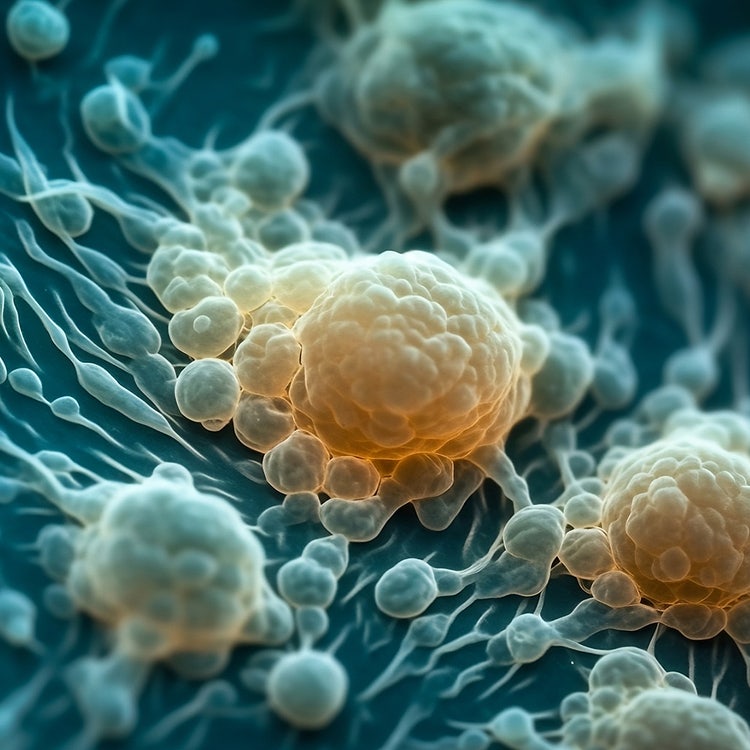Organoid Development

Why It Matters
Organoid Development
The drug discovery process is undergoing a dynamic shift towards the development and application of clinically relevant human cell-based models. This shift is spurred by historical trends of evaluating drug safety and efficacy with current in vivo models. These in vivo model systems do not perfectly predict drug activity when administered to patients, largely due to major physiological differences compared to humans.
Organoids are addressing these concerns by providing a cell-based model that mimics the complex human physiological responses in a controlled environment. The use of organoids for ADME (absorption, distribution, metabolism and excretion) studies can provide proper physiological context and correlative results compared to in vivo models. As a result, the number of relevant organoid models that mimic tissue and organ types is rapidly expanding along with the predictive assays. Standardizing organoid development and culture is critical to ensure models are robust enough to deliver required insights during drug discovery and screening.
The Life Sciences companies of Danaher Corporation support biopharma and clinical researchers in their endeavor to standardize and scale organoids for drug screening with its comprehensive platform of best-in-class science and technology companies. We recognize the necessity for solutions that eliminate bottlenecks faster and aim to address this with our extensive instrument, software, and services portfolio.
The Process
One lab, three paths to faster organoid development outcomes
Product Spotlight
CellXpress.ai Automated Cell Culture System
Automate the entire cell culture process to improve workflows and make assays more reliable and reproducible.

FAQs
What is the process of organoid development?
Organoid development involves creating simplified 3D structures of organs to mimic organ complexity. Organoids are used for studying organ development, modeling diseases and drug discovery. The process of organoid development starts with selecting source material, such as pluripotent stem cells, established cell lines, primary cells, or tissue samples. Before organoid development, genetic modifications like CRISPR editing of cells or verification of primary samples are performed. It is also crucial to include a control group if leveraging organoids for drug screening applications.
After cell selection, excipients like cryopreservation reagents are removed, and a suitable culture media is chosen. If leveraging stem cells, inducing differentiation is crucial and requires media supplemented with growth factors. Initial monolayer cultures are critical for expanding cell populations, followed by 3D expansion for organoid formation and maturation. For 3D formation, a supporting scaffold or extracellular matrix will be required.
Assaying organoids involves tests such as ATP assays, gene expression studies and toxicology screenings. Spatial analysis can also be conducted using confocal microscopy techniques with specialized software. Cell surface protein expression analysis is performed using flow cytometry, with data analysis conducted via appropriate software.
How long does it take to develop an organoid?
The duration required for organoid development varies depending on the type of organoid and the specific experimental conditions used. Generally, the process takes several weeks to months. It begins with the expansion and differentiation into specific cell types and the subsequent assembly into mature, functional organoid structures. Intestinal organoids can take as little as two weeks to develop, while brain organoids can require as long as three months.
What is the organoid model for drug screening?
Organoids have emerged as indispensable tools for drug screening due to their ability to mimic the complexity and functionality of human tissues. Unlike traditional cell culture models or animal studies, organoids provide a more accurate representation of human physiological responses, making them valuable for assessing drug efficacy, toxicity and pharmacokinetics.
What technologies and instruments are essential for successful organoid culture?
Successful organoid culture relies on a suite of essential technologies and instruments tailored to replicate the complex microenvironment of human organs in vitro.
The Life Science companies of Danaher are at the forefront of providing these enabling technologies and tools. Below are a few essential technologies and instruments required for successful organoid culture to ensure proper development, maintenance and analysis.
Cell Culture Equipment:
- Molecular Devices CellXpress.ai Automated Cell Culture System: This innovative AI-driven hub automates all cell culture feeding and passaging to facilitate a 24/7 schedule. It handles monolayer and 3D organoid cultures to ensure reproducibility and consistency. It also includes onboard imaging to help drive decision-making.
- Beckman Coulter Life Sciences Biomek i-Series Automated Workstation: This system automates liquid handling tasks such as media changes, preparation of culture plates and routine maintenance, ensuring consistency and reducing manual error.
- Beckman Coulter Life Sciences Allegra V15R Benchtop Centrifuge: Used for cell isolation, washing and preparation before culture, and cell passaging by centrifugation.
Imaging Systems:
- Molecular Devices ImageXpress Confocal HT.ai: High-content imaging system that monitors and analyzes organoid growth, morphology and development in 3D cultures.
- Leica Microsystems’ Stellaris 5 & 8 DLS Confocal Microscopes: Used for spatial analysis of organoids, allowing researchers to understand the architecture and cellular interactions within the 3D structures.
- Leica Microsystems Mica: This microhub unites widefield and confocal imaging in a sample-protecting, incubating environment. Mica provides intelligent automation for greater organoid spatial imaging efficiency and AI-supported analysis.
Assay & Analytical Solutions:
- Beckman Coulter Life Sciences Vi-CELL BLU Cell Viability Analyzer: This analyzer provides automated cell viability and counting, which is essential for assessing cell health during tissue dissociation, culture preparation and passaging.
- Beckman Coulter Life Sciences CytoFLEX Flow Cytometer: Analyzes cell surface and intracellular protein expression.
- SCIEX ZenoTOF 7600 System: This high-resolution mass spectrometry system provides a detailed analysis of metabolomics and other molecular processes associated with organoids.
- Genedata’s Expressionist Software: Can analyze all your mass spectrometry data, facilitating the identification of biomarkers and molecular profiles in organoid cultures.
- Molecular Devices FLIPR Penta High Throughput Cellular Screening System: Automates toxicology, kinetic and functional screening assays in organoids, enabling rapid screening of compounds for drug discovery.